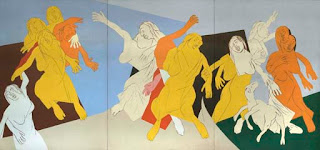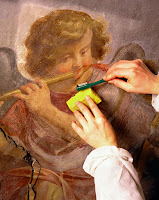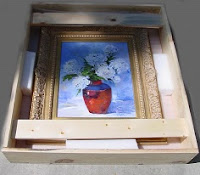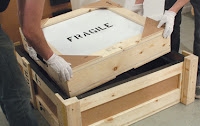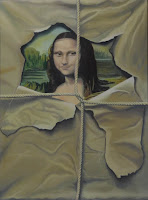Lord Krishna Flute Music - Mahabharat
Translate
Apr 17, 2023
Unwind with No.1 Lord Krishna Flute Music - Mesmerizing Tune Guaranteed to Give You Blissful Serenity!
 Helping people connect with each other through Arts and Music. Arts and Music are universal languages to promote peace and happiness.
Technology is the link connecting arts and music to the world.
Helping people connect with each other through Arts and Music. Arts and Music are universal languages to promote peace and happiness.
Technology is the link connecting arts and music to the world.
Jan 11, 2023
Relaxing Ocean Music for Deep Sleep, Stress Relief, and Meditation - 1 H...
Dear All,
I'm enjoying making these relaxing, soothing music tracks. It's giving me sense of happiness listening to them repeatedly.
Ease into a deep sleep with the soothing sound of ocean waves. This 1 hour video features calming music paired with the gentle sound of water, making it the perfect background noise for sleeping, meditation, and stress relief. With its peaceful and relaxing sounds, this video is perfect for helping you relax and unwind. Sit back, close your eyes, and let the stress of the day drift away as you listen to the soothing sounds of the ocean. Enjoy listening while travelling or on your long flights, it'll take you away from your regular hustle-bustle.
I started this channel with a simple objective of creating lovely relaxing music tracks which are de-stressing, helps in improving focus and productivity and makes you calm and you may play them often. I've put a lot of effort to compose it.
"Listen so you can be more productive"
#432Hz #RelaxingMusic #DeepSleep #StressRelief #MeditationMusic #BeautifulWavesound #8HoursOfMusic Helping people connect with each other through Arts and Music. Arts and Music are universal languages to promote peace and happiness.
Technology is the link connecting arts and music to the world.
Helping people connect with each other through Arts and Music. Arts and Music are universal languages to promote peace and happiness.
Technology is the link connecting arts and music to the world.
Jan 7, 2023
Why Meditation is Changing Lives, listen to Relaxing Music | Stress Relief
Click - Meditation Music
 Helping people connect with each other through Arts and Music. Arts and Music are universal languages to promote peace and happiness.
Technology is the link connecting arts and music to the world.
Helping people connect with each other through Arts and Music. Arts and Music are universal languages to promote peace and happiness.
Technology is the link connecting arts and music to the world.
Dec 25, 2022
Christmas Fireplace | Live crackling sound | Fire video | Bonfire Lounge...
 Helping people connect with each other through Arts and Music. Arts and Music are universal languages to promote peace and happiness.
Technology is the link connecting arts and music to the world.
Helping people connect with each other through Arts and Music. Arts and Music are universal languages to promote peace and happiness.
Technology is the link connecting arts and music to the world.
May 11, 2021
Invest in Arts? 🎨
How to Invest in Art? 🎨
Art is booming! Indian art is the new avenue for investment! The headlines are screaming names of Indian masters and the amounts they are being sold for. Artist Tyeb Mehta’s ‘Mahishasura’ being auctioned for $1.5 million is still quoted in any article on the Indian art market. Suddenly people who wouldn’t know their Hussain’s from their Raza’s want to buy ‘Art’ and reap golden dividends on their ‘investments’. This brings us to the moot question that every new investor would like an answer to “How to invest in art?”
Know your art: When it comes to buying stocks you would undoubtedly study the market, go through past company records, see the financial health of the company. Investing in art requires the same amount of understanding and research, only in this case you will be focusing on the artist whose work you are planning to buy. Following are the points that you should cover in your research:
- Go through his profile, it makes a difference if the
artist has been to an art school or is self-taught.
- Consider which galleries are promoting the artist, how
many exhibitions has he shown his works in, who have been past buyers of
his works, have his works been acquired by art museums or institutions?
- Before zeroing in on a particular work, see the
previous and current works of the artist. Ideally it is advisable to
purchase work in the particular style associated with the artist. A one-off experimentalize work may appeal to you but would perhaps not be the
best option when you seek appreciation on your investment.
- For a artwork to have an appreciation value it must be
‘timeless’ which means it should be able to transcend currents fads and
trends. For instance, the Indian art market a couple of years ago was
flooded with images of the Buddha, with new buyers seeking the Buddha in
line with the Feng Shui fad; these have little or no investment value.
- Consider the provenance of the work, especially if the
artist is well known. Insist on an authenticity certificate, signatures
are very easy to forge and with the high prices that well-known artists
command, fakes are a lucrative market.
- Of course, it the job of gallerist to guide you
before you make your purchase, but always bear in mind, that they too are
interested in making a ‘sale’ so learn to read between the lines.
Established or
Upcoming Artist?
This question can be easily answered by considering what returns you are
seeking. If you are looking for short term gains then by all means buy an
established artist, where you are likely to make an estimated 20% gain annually
if you choose to resell your work. However, if you are able to have a lock in
period of about 8 to 10 years for your investment, then upcoming artists are a
more exciting option. For the reason that if the artist you are backing does
become a sensation, then your small investment will truly escalate, besides you
get the satisfaction of knowing that you have a good ‘eye’ for art and chose
well. It is always advisable to balance your art portfolio with works by both
established and emerging artists. Just as not all upcoming artists will be
successful, similarly not all works by established artists are masterpieces and
appreciate in value.
Art for Art’s sake! Purchasing art cannot be just a business decision, because
unlike stocks, here the ‘product’ that is the paintings should appeal to you on
an emotional level as well. In fact, very often an artwork that manages to
capture your imagination and wonder; is most likely going to appreciate in
value as well. Again, unlike stocks, you are not going to get monetary
dividends from your investment, but you can get hours of viewing pleasure from
your artwork. Besides, you are likely to maintain a gestation period before
re-selling the artwork, so you may as well purchase something you like – buy an
artwork for its intrinsic value, the material returns will follow!
Art Funds: For those who wish to take advantage of the art boom, but would rather leave the purchase of artworks to the experts, there is the option of Art Funds! They function in a manner similar to the mutual funds and here their portfolio consists of works by artists which their experts recommend. Some art funds that cater to the Contemporary Indian art market are Copal Art, Edelweiss Securities, Crayon Capital and Osian’s Connoisseurs of Art. These funds are listed on the stock exchange and you monitor their performance. These funds will have a minimum investment requirement and lock in period as well. After deducting their managerial fees, they distribute the profits from the sale of the artworks to their investors.
A word of caution though - Investing in Art Funds does not guarantee a return:
evaluate an Art Fund carefully like you’d evaluate any other similar investment!
The essential basic point to remember while investing in art is that it is not
a very ‘liquid’ asset. There could be instances of artists you have purchased
not appreciating in value, there could be a long gestation period. At the same
time, ‘art’ is probably the only ‘collectible’ which has a reasonably
structured and transparent market. Prominent galleries which deal with the top
level artists can even offer you a buy-back guarantee on the artworks. Ride the
boom of the Indian art market but play safe for when the levelling process sets
in!
Buy original paintings on Artzyme
Fast Facts for
investing in Art:
- Buy a work that you feel a connection with
- Research the artist
- Check out the provenance and authenticity of the
artwork
- Buy work that is typical of an artist’s style
- Be prepared for a gestation period on your investment
- Purchase a mix of established and upcoming artists in
your art portfolio
- Art funds are an investment option for those not
looking to physically own works
- Take care of the artworks you have purchased, (read blog my blog on preserving arts), their value depends on how well maintained they are.
 Helping people connect with each other through Arts and Music. Arts and Music are universal languages to promote peace and happiness.
Technology is the link connecting arts and music to the world.
Helping people connect with each other through Arts and Music. Arts and Music are universal languages to promote peace and happiness.
Technology is the link connecting arts and music to the world.
May 7, 2021
Techniques to Preserve Arts | Paintings | Conservation
The Art of Preservation | Conservation
Art – paintings, sculptures, tapestries, drawings, whatever the genre it represents is something unique, beautiful, and deserving of special care. Artworks may be masterpieces or done by upcoming artists, the support used may be paper, canvas or cloth, whatever the medium involved all artworks need to be cared for in a special manner. Would you leave a diamond unsecured or an exquisite crystal piece on the floor, the same applies to paintings, they require and demand care if they are keep giving you viewing pleasure for many years to come.
Let us explore the elements that are the main threat to artworks:
Light: With light we walk a fine line, you need good light to view the works with all their details and nuances, at the same time too much can fade the colours and as a heat source, light can damage the works by drying them. When placing lights make sure that it does not reflect on the artwork, this is the ideal distance to be maintained. Also avoid direct sunlight by not placing the works opposite windows which not only could fade the paint but also discolor the paper. Another good idea of reducing the effects of light is to use non-reflective glass or UV-coated glass while framing paintings.
Humidity: Damp can cause pictures to ripple. If the ripples touch the glass, the picture might stick and be hard to remove. Damp also encourages fungal growth - likely to show as brown stains. It is always best to avoid hanging framed pictures in humid conditions i.e. bathrooms. Allow six months before hanging pictures on newly plastered walls.
Ideally, cool storage is desirable for archival materials. Fluctuations and extremes in temperature and humidity levels can have a detrimental effect upon the preservation of archival materials. Try to keep the temperature at one level 24 hours a day, 365 days a year; don’t change settings for nights or weekends. While this may be difficult to maintain in a home, the perfect temperature is recommended to be 67 degrees Fahrenheit or about 20 degrees Celsius the humidity level should be about 47 percent. Keep objects away from heat sources such as furnace vents, fireplaces, warm lights, and direct sunlight.
Pests: There are a variety of insects that can damage paper, photographs and leather artifacts; primarily, silverfish, firebrats, carpet beetles, and the book louse. In general good housekeeping is the best method of deterrence. Regular inspections of stored collections provide the cheapest and safest method of safeguarding against infestation. Screening on windows and doors will aid in keeping out larger pests. In addition, fresh flowers and plants should be inspected before being placed in the vicinity of your artworks. When infestations are suspected, sticky insect traps can be placed under cabinets and cupboards. These traps do not poison insects; they aid in assessing the numbers and types of insects that are present. In general, insecticides should not be used on or in the vicinity of archival materials. Insecticides can cause fading and discoloration of paper, leather, and parchment. If you find an infested item, place it in a sealed plastic bag and contact a professional immediately.
Pollution: Dirty air! You may wonder at the term, but air pollution does not merely affect our health, but also the health of your paintings. Tiny microscopic particles of pollution settle on the artwork and affect the paint and the appearance of the work. Research shows that not until at least 12% of the work has been affected will the normal human eye be able to detect the effects of pollution.
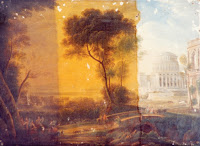
Mold: Areas of high humidity and damp are highly susceptible to damage by mold growth. Any appearance of mold must be immediately removed; the best way is to use a soft brush and low suction vacuum cleaner. In case a vacuum cleaner is not available brush the mold onto a paper and then dispose off it. The aim is to not let the spores of mold spread in the air. Also remember not to use the brush again without cleaning it effectively.
So now that you’ve read about the factors that can cause damage to your artwork, let’s see how their effects can be prevented or mitigated:
Framing: While framing ensure that the board and mount are made of acid free materials. Paintings, especially those made of natural pigments, like the traditional Warli artworks, should be framed under glass so that the pigments do not flake due to environmental factors or accidents. Canvas works on stretchers may sag over time, it is best to get them tightened or re-stretched at a professional framers, every five years.
Storage: At any point of time if you need to store any artworks, especially paintings need extra care. Place them flat in a crate if possible and ensure that the wood used for the crate is acid free. Paper works and photographs need more care while storing. Keep a regular check on stored artworks of artists to prevent the prevalence of pests, mold etc.
Cleaning: Clean artwork gently, dust frames or treat with a soft brush, rather than applying water or cleaning fluids. At all times ensure that cleaning fluids or water do not touch the varnished surfaces of oil paintings. Do not directly spray cleaning fluids onto the glass of a painting; apply them on a duster first. Frames can also be susceptible to damage from cleaning fluids, dust them carefully instead. In the case of photographs or prints make sure you don’t touch them directly or you could leave prints. If by accident any artwork does get wet, dab it gently and leave it to dry, never rub!
Moving artwork: Paintings are at risk when you move them so do not do so until absolutely necessary. Remember to clear the way of furniture and other obstructions. If you feel that you can manage moving it on your own, carry the painting with the artwork facing you. Remove all items like jewelry, belts etc. to avoid scratching or tearing the surface of the painting.
Most people spend a huge amount on the artwork they purchase; unfortunately none of the artwork will come with a maintenance manual. If you practice the suggestions we have outlined above you will be able to enjoy the viewing pleasure of your artworks for a long time.
How to Package and Ship Paintings.
Fast Facts to preserve your artworks:
- Avoid direct light, frame artworks using a UV-coated or no-reflecting glass
- Do not place paintings near a heat source or air-conditioning vent
- Mitigate the effects of pollution by framing all works using acid free mounts and boards
- Never spray insecticides near or on stored artworks
- Regularly inspect and clean stored artworks
- Place paintings flat in a crate while storing
- Never spray cleaning agents directly on a painting or frame
- Remove mold using a soft brush and low suction vacuum cleaner
- Be very careful while moving artworks.
 Helping people connect with each other through Arts and Music. Arts and Music are universal languages to promote peace and happiness.
Technology is the link connecting arts and music to the world.
Helping people connect with each other through Arts and Music. Arts and Music are universal languages to promote peace and happiness.
Technology is the link connecting arts and music to the world.
May 2, 2021
How do I package a ROLLED painting for shipping? 🗞
Packaging a ROLLED painting.
Below are instructions for how to package:
Rolled canvas paintings 🗞
Paintings on canvas up to 72”x72” may be taken off its stretchers, rolled, and shipped in a heavy duty mailing tube between 8” and 12” diameter, depending on the size of the canvas. Make absolutely certain that your painting is completely dry before attempting to roll it.
What you’ll need:
· Glassine paper or acid-free archival tissue paper
· Heavy duty mailing tube with plastic end caps no smaller than 8” in diameter and up to 12” (depending on the size of your canvas).
· A second tube of smaller diameter for inner support. (You’ll roll your artwork around this tube and insert it inside the larger tube.)
· Packing tape
· Bubble wrap
1 – Sandwich your canvas between two layers of acid free archival paper. Make sure that the canvas is completely covered by the paper.
2 – Roll the paper-covered artwork—paint side outward—around the smaller tube to provide inner support. DO NOT roll too tightly as this can damage the painting!
3 – Next, roll a layer of bubble wrap around the artwork for padding and to seal out moisture. Seal completely with tape.
4 – Place this tube within the outer mailing tube. Fill extra space at the ends with extra bubble wrap, but take care not to crush the edges of your painting. Place the end caps on and seal them shut with packing tape.
5 – Affix the shipping label to the package and put clear tape over the label so it doesn’t get removed during shipment. Clearly mark the tube as “FRAGILE.”
 Helping people connect with each other through Arts and Music. Arts and Music are universal languages to promote peace and happiness.
Technology is the link connecting arts and music to the world.
Helping people connect with each other through Arts and Music. Arts and Music are universal languages to promote peace and happiness.
Technology is the link connecting arts and music to the world.
Apr 30, 2021
How do I package a FRAMED painting for shipping? 🖼
Packing a FRAMED painting?
Below is the guide to pack framed arts:
Framed paintings 🖼
What you’ll need -
-
Glassine paper or acid-free archival tissue paper
-
Plastic sheeting or poly wrap
-
Bubble wrap
-
Painters tape (if packing a glass frame)
-
Cardboard corner protectors
-
Packing tape
-
Foam board at least ½” thick
-
Shredded or wadded white paper
-
Very sturdy cardboard box if framed artwork is under 18”x24”
-
Custom wooden crate if framed artwork is larger than 18”x24”
1 – Use a sturdy cardboard box or build a custom crate that will fit the framed painting plus approximately three (3) inches of space on all sides. (This extra space will accommodate the layers of bubble wrap to be added.)
2 – If the frame has a protective glass or acrylic pane, remove it from the frame. If it does not, skip to step 4. Apply two pieces of painters tape diagonally across the glass/acrylic pane to form a large “X”. Should the glass break during shipment, the tape will help keep the broken pieces together.
3 – Sandwich the glass/acrylic pane between two sheets of foam board approximately 2 inches larger than the glass on all sides. Firmly seal the foam board sandwich all around with packing tape, making sure that the glass/acrylic panel does not shift around within.
4 – Wrap the painting in acid-free, archival tissue paper or glassine. Note that any material that will come into contact with the surface of the painted work should be archival quality.
5 – To protect against moisture, wrap the artwork with plastic sheeting or poly wrap.
6 – Add cardboard corner protectors to the corners of the wrapped work. You can buy corner protectors readymade, or you can construct them yourself. Several online resources offer instructions on how to make them.
7 – Wrap the framed painting in three (3) layers of bubble wrap, using packing tape to secure it.
If your framed painting is larger than 18”x24”, you’ll need to build a wooden crate and seal the work inside.
If your framed painting is under 18”x24”, proceed to step below.
8 – Sandwich the wrapped painting within two sheets of foam board and tape all the way around to secure it.
9 – Place it inside a sturdy cardboard box. To minimize movement within the box, thoroughly fill any empty areas around the artwork with shredded paper. The more snug the fit, the less the potential for damage. Seal the box thoroughly with packing tape, reinforcing the corners.
10 – Affix the shipping label to the package and put clear tape over the label so it doesn’t get removed during shipment. Using a felt tip pen, write “FRAGILE” in large capital letters on the package, or use readymade “FRAGILE” labels.
The above packaging method should be followed, even if your aren't and artist.
🖼 🖼 🖼 🖼 🖼
 Helping people connect with each other through Arts and Music. Arts and Music are universal languages to promote peace and happiness.
Technology is the link connecting arts and music to the world.
Helping people connect with each other through Arts and Music. Arts and Music are universal languages to promote peace and happiness.
Technology is the link connecting arts and music to the world.
Apr 29, 2021
How do I pack artwork like sculpture in a crate for shipping? 🚚
To pack artwork in a crate for shipping.
Use a custom crate for artworks such as sculpture, large flat artworks, paintings larger than 48"x48", and fragile items.
What you’ll need:
· Four (4) planks of plywood (¼ to ½ inch thick depending on size and fragility of the work) for the frame
· Two (2) plywood sheets for the front and back panels
· Drill
· Saw
· 1¼ inch wood screws
· Wood glue
· Foam board, ½” thick
1 Measure your pre-wrapped artwork (wrapped according to the instructions given for your particular work), taking down the height, width, and depth of the wrapped piece. If you’re shipping a painting, use these measurements to calculate the dimensions of your plywood pieces for the frame of your crate. Keep in mind that you will add a ½” foam board lining to your crate, so accommodate for this. If you’re shipping a sculpture, make sure that the crate’s dimensions are approximately three (3) to four (4) inches larger on all sides than the sculpture itself. The extra space will be filled with bubble wrap and shredded paper.
2 Cut four pieces of plywood according to the dimensions you took in step 1 in order to build a frame with an opening that can snugly fit your wrapped work. Remember to account for the thickness of the plywood when measuring length and height, and cut accordingly. The top piece of the frame should sit on and extend over the top edges of the side pieces, as it must be easily removable. This piece will act as the crate’s lid, to be unscrewed by the collector.
3 Begin building the frame by assembling three (3) of the plywood strips together with screws and wood glue, leaving the top piece (i.e. lid) off for now. It will be screwed on after the artwork has been placed inside.
4 Line the frame with strips of foam board, securing them on with tape or glue. If using glue to line the crate with foam board, wait for it to dry before finishing the packing process.
5 Cut two sheets of plywood to the same dimensions of the assembled frame. These will be the front and back panels of your crate.
6 Secure one sheet to the back of the frame using wood glue and screws.
7 You will then complete the packaging process by placing your artwork inside and sealing the crate around it. Lay a piece of foam board (the same size as the frame) inside the open crate, and place your pre-wrapped artwork on top. There should be no room for movement inside.
8 Cover your artwork with another layer of foam board. Place the other sheet of Masonite board on top of the frame, securing well with wood glue and screws. Do your best to ensure that the crate is air and moisture tight.
9 Clearly indicate which panel is the removable lid by writing “UNSCREW THIS SIDE ONLY” so the collector knows which panel to remove. If needed, write any instructions (using a black felt tip pen) on the crate that will help the collector easily remove the lid.
10 Affix the shipping label to the outside and put clear tape over the label so it doesn’t get removed during shipment. Clearly mark the crate or box as “FRAGILE.”
TIP: For ease of transport, you can screw a cabinet handle to the top of the crate. The screws should be long enough so that the handle doesn’t come loose while someone is carrying the crate with sculptor or painting inside, but not so long that they protrude into the interior of the crate.
🚚🚚🚚🚚🚚
- Himjal
 Helping people connect with each other through Arts and Music. Arts and Music are universal languages to promote peace and happiness.
Technology is the link connecting arts and music to the world.
Helping people connect with each other through Arts and Music. Arts and Music are universal languages to promote peace and happiness.
Technology is the link connecting arts and music to the world.
Apr 28, 2021
How do I package a artwork/ painting smaller than 48" for shifting?
Arts smaller than 48”x 48”
Below is the guide to follow for packaging your Arts:
All artworks that are 48” or above on any one side need to be packaged into a wooden crate.
IMPORTANT: Always make certain that your painting is completely dry before packaging it for shipment. Sometimes paint can appear dry when it’s not. Since drying time depends on such factors as the type and brand of paint, the drying mediums used (if any), the paint colors, etc., you must research the correct drying time for the specific supplies you’ve used.
Paintings smaller than 48”x 48” -
What you’ll need:
• Glassine paper or acid-free archival tissue paper
• Plastic sheeting, poly wrap, or heavy plastic bag
• Bubble wrap
• Foam board at least ½” thick or two-ply cardboard
• Packing tape
• Cardboard corner protectors
• Cardboard box
1 – Wrap the painting in glassine paper or acid-free, archival tissue paper. Note that any material that comes into contact with the surface of the work should be archival quality. We advise that you avoid touching the painting’s surface with bare hands by wearing white cotton gloves or placing acid-free tissue paper between the work and your fingers when handling.
2 –Take four (4) 8”x 8” square pieces of glassine paper or acid-free tissue paper (you may adjust the size of the squares to better fit the size of your work) and fold each in half diagonally to create a triangle, then fold in half again to create a triangle pocket. Place one pocket onto each corner of the painting.
3 – Taping only onto the tissue paper corners, tape the wrapped painting to a sheet of foam board (or two-ply cardboard) the same size or slightly larger than the painting for a firm backing.
4 – To protect against moisture, wrap the glassine-covered artwork with plastic sheeting/poly wrap or put it inside a heavy plastic bag. Use tape to seal all areas where water can enter and cause damage.
5 – Wrap the entire work with two (2) layers of bubble wrap for a protective padding. Wrap it as you would a gift, using tape to secure it shut.
6 – Place cardboard corner protectors on the corners of the wrapped artwork.
7 – Place the wrapped artwork between 2 pieces of foam board that are at least ½” thickness (or two-ply cardboard), forming a “sandwich.” Also, the borders of the foam board sheets should extend 2-3 inches beyond all edges of the bubble-wrapped artwork. Use packing tape to bind the foam board sandwich together. Be certain the sides are taped down firmly to ensure that the artwork doesn’t shift around within.
IMPORTANT: Take care not to apply too much pressure to the surface of your artwork. Doing so could create indentations on the stretched canvas.
8 – Place the foam board-covered painting into a cardboard box with approximately three (3) inches of space on all sides. Fill the empty space with enough bubble wrap or wadded/shredded white paper to ensure that the artwork doesn’t shift during transit.
9 – Use the H-taping method to seal the box. The H-taping method involves using long strips of packing tape to completely seal the opening flaps of the box. Use one long strip of tape over the horizontal opening between the two flaps, and two strips over the vertical sides of the flaps—forming an “H.” Apply additional vertical strips of tape as needed across the sealed flaps for added reinforcement. Illustrations of this method are provided by different sources online. Just type “H-taping method” into the Google/ Bing search box.
10 – Affix the shipping label to the package and put clear tape over the label so it doesn’t get removed during shipment. Using a felt tip pen, write “FRAGILE” in large capital letters on the box, or use readymade “FRAGILE” labels.
The above packaging method is not only for artist but also for anyone shipping an artwork.
 Helping people connect with each other through Arts and Music. Arts and Music are universal languages to promote peace and happiness.
Technology is the link connecting arts and music to the world.
Helping people connect with each other through Arts and Music. Arts and Music are universal languages to promote peace and happiness.
Technology is the link connecting arts and music to the world.
Apr 27, 2021
How do I pack artwork/ paintings larger than 48" for shipping?
Artworks larger than 48”x 48”
Below is the guide to follow for packaging your Arts for shipping:
IMPORTANT: Always make certain that your painting is completely dry before packaging it for shipment. Sometimes paint can appear dry when it’s not. Since drying time depends on such factors as the type and brand of paint, the drying mediums used (if any), the paint colors, etc., you must research the correct drying time for the specific supplies you’ve used.
Paintings larger than 48”x 48” -
What you’ll need:
• Glassine paper or acid-free archival tissue paper
• Plastic sheeting, poly wrap, or heavy plastic bag
• Bubble wrap
• Foam board at least ½” thick or two-ply cardboard
• Packing tape
• Cardboard corner protectors
• Custom-made wooden crate
1 – Wrap the painting in glassine paper or acid-free, archival tissue paper. Note that any material that comes into contact with the surface of the work should be archival quality. We advise that you avoid touching the painting’s surface with bare hands by wearing white cotton gloves or placing acid-free tissue paper between the work and your fingers when handling.
2 –Take four (4) 8”x 8” square pieces of glassine paper or acid-free tissue paper (you may adjust the size of the squares to better fit the size of your work) and fold each in half diagonally to create a triangle, then fold in half again to create a triangle pocket. Place one pocket onto each corner of the painting.
3 – Taping only onto the tissue paper corners, tape the wrapped painting to a sheet of foam board (or two-ply cardboard) the same size or slightly larger than the painting for a firm backing.
4 – To protect against moisture, wrap the glassine-covered artwork with plastic sheeting/poly wrap or put it inside a heavy plastic bag. Use tape to seal all areas where water can enter and cause damage.
5 – Wrap the entire work with atleast three (3) layers of bubble wrap for a protective padding. Use more if you believe your painting requires more protection (e.g. it has a raised surface). Wrap it as you would a gift, using tape to secure it shut.
6 – Place cardboard corner protectors on the corners of the wrapped artwork.
7 – Next, build a wooden crate and seal the work inside
8 – Affix the shipping label to the package and put clear tape over the label so it doesn’t get removed during shipment. Using a felt tip pen, write “FRAGILE” in large capital letters on the box, or use readymade “FRAGILE” labels.
Hope the above is helpful not only to artists but also for anyone transporting artworks.
The YouTube video should help you understand the complete process.
- Himjal
 Helping people connect with each other through Arts and Music. Arts and Music are universal languages to promote peace and happiness.
Technology is the link connecting arts and music to the world.
Helping people connect with each other through Arts and Music. Arts and Music are universal languages to promote peace and happiness.
Technology is the link connecting arts and music to the world.
Apr 26, 2021
Arts for Your Living Room 'Paintings'
Art Selection for Your Living Room
"A work of Art works because it's true and because it's Real " - Yann Martel
"Art enables us to find ourselves as well as lost at the same time " - Thomas Merton
Art is the ultimate expression of an individual's personality, attitude and state of mind. The walls of his home are mirror image of the real Him/ Her. The moment someone enters the home, the wall art in the house reveals volumes about the house, the family, culture etc., therefore, one needs to be extremely diligent in selection of wall art. Below are some points to consider while selecting the same -
- Select the most important and visible walls in your home. The art that you decide to bring into your house is important to you so give it room to shine by leaving some walls blank. It is not necessary to hang something on every wall. The mantle is a great place for a piece that you love as your eye is drawn to it and it is often one of the first areas noticed in a living room.
- Mirror the size of the wall: If you have a long horizontal wall hang a long horizontal piece (or collection of pieces) on that wall. If you have a narrow vertical spot, place a piece that is narrow and vertical and that fills the space. By accentuating the height or length of the wall, you make the room feel larger.
- Fill the wall - Don't be afraid to use the entire wall; many people think they can't handle a big piece of art when they can.
- Color is important: Think about the feel of a color before placing it in your room. Light blues and greens are cool, serene colors that are well suited for a room meant for rest and relaxation such as a bedroom. It is nice to greet people in an entry space with warmer tones, welcoming them into the home.
- Vary the texture of the pieces in your room. If you have a photograph behind glass above your favorite chair, you may want to choose a piece of art on canvas for above your sofa. Variety is good when you hang art in a room!
- A frame can serve as a bridge between the artwork and the room.
- When selecting a frame, it is important that it complement the furniture and architectural features of a room. Choose a frame to match the wood floors or if you have gold lamps in your living room, select a golf frame for the art. A frame can be particularly helpful when bringing modern art into a traditional home. Abstracts
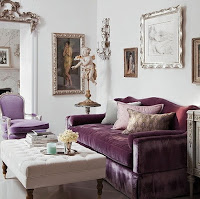
- Play with the lighting in the room: After placing the artwork, move your existing lighting around or think about adding new spots to illuminate the piece. A well-lit piece of art will draw visitors into your space.
- Watch out for glare: When hanging art behind glass, stay away from walls directly across from windows as the light will create glare and the piece will be lost on the wall. Non-reflective museum glass is available at a higher price but worth it if glare is an issue. Landscapes
- Himjal
 Helping people connect with each other through Arts and Music. Arts and Music are universal languages to promote peace and happiness.
Technology is the link connecting arts and music to the world.
Helping people connect with each other through Arts and Music. Arts and Music are universal languages to promote peace and happiness.
Technology is the link connecting arts and music to the world.


